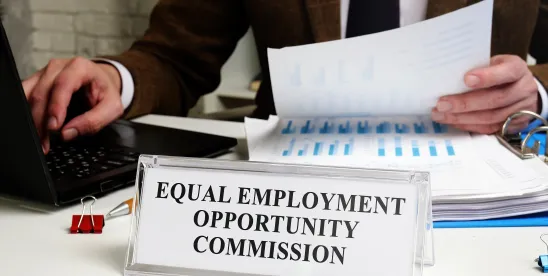Key Takeaways
- Disparate impact liability holds employers accountable for policies that appear neutral, but disproportionately harm a protected group, even without discriminatory intent.
- This EO significantly reduces federal agency enforcement of disparate impact claims, but importantly, does not impact the risk of a class or individual claim under federal or state laws.
- Businesses should continue to review hiring and promotion policies for unintentional bias, ensure compliance with federal law and any applicable state laws, and await updated federal guidance from the EEOC.
On April 23, 2025, President Trump issued an Executive Order entitled “Restoring Equality of Opportunity and Meritocracy” (“EO”) mandating the elimination of disparate impact liability within Title VI and VII of the Civil Rights Act of 1964. The EO further emphasizes the importance and focus of this administration on the concept of equal employment opportunity.
Disparate impact liability is a means by which employers can be held liable for discrimination when their facially neutral policies or practices result in a disproportionate adverse impact on a protected class. This theory of liability was recognized by the Supreme Court in 1971 in the case of Griggs v. Duke Power Co., and was later codified by Congress in the Civil Rights Act of 1991.
This EO seeks to eliminate the use of this theory of liability to the “maximum degree possible”. To effectuate this goal, the order takes several key steps. First, it revokes several former presidential actions that approved of disparate impact liability. Second, it directs all agencies to deprioritize enforcement of statutes and regulations to the extent that they include disparate impact liability.
This order directs the Attorney General to initiate appropriate action to repeal or amend the implementing regulations for Title VI of the Civil Rights Act of 1964 for all agencies to the extent they contemplate disparate-impact liability. In addition, within 30 days of the date of the EO, the Attorney General is to report to the President, in coordination with the chairs of all other agencies, all existing regulations, guidance, rules, or orders that impose disparate impact liability and detail steps for their amendment or repeal.
This EO also directs the Attorney General and EEOC Chair to assess all pending investigations, civil suits, or positions taken in ongoing matters that rely on a theory of disparate impact liability and to take appropriate action consistent with this EO. Further, the Attorney General is to determine whether Federal Authority preempts State laws that impose disparate impact liability.
Finally, the EO directs the Attorney General and the EEOC Chair to issue guidance or technical assistance to employers regarding appropriate methods to promote equal access to employment regardless of whether an applicant has a college education, where appropriate.
Practically, this EO signals a continued shift in enforcement at the EEOC. It seems unlikely the EEOC will bring any new litigation relying on disparate impact. However, a private right of action for disparate impact still exists under the precedent of Griggs and similar cases, allowing employees to bring claims of discrimination relying on a disparate impact theory. Moreover, state laws may also provide for disparate impact liability.





 />i
/>i

